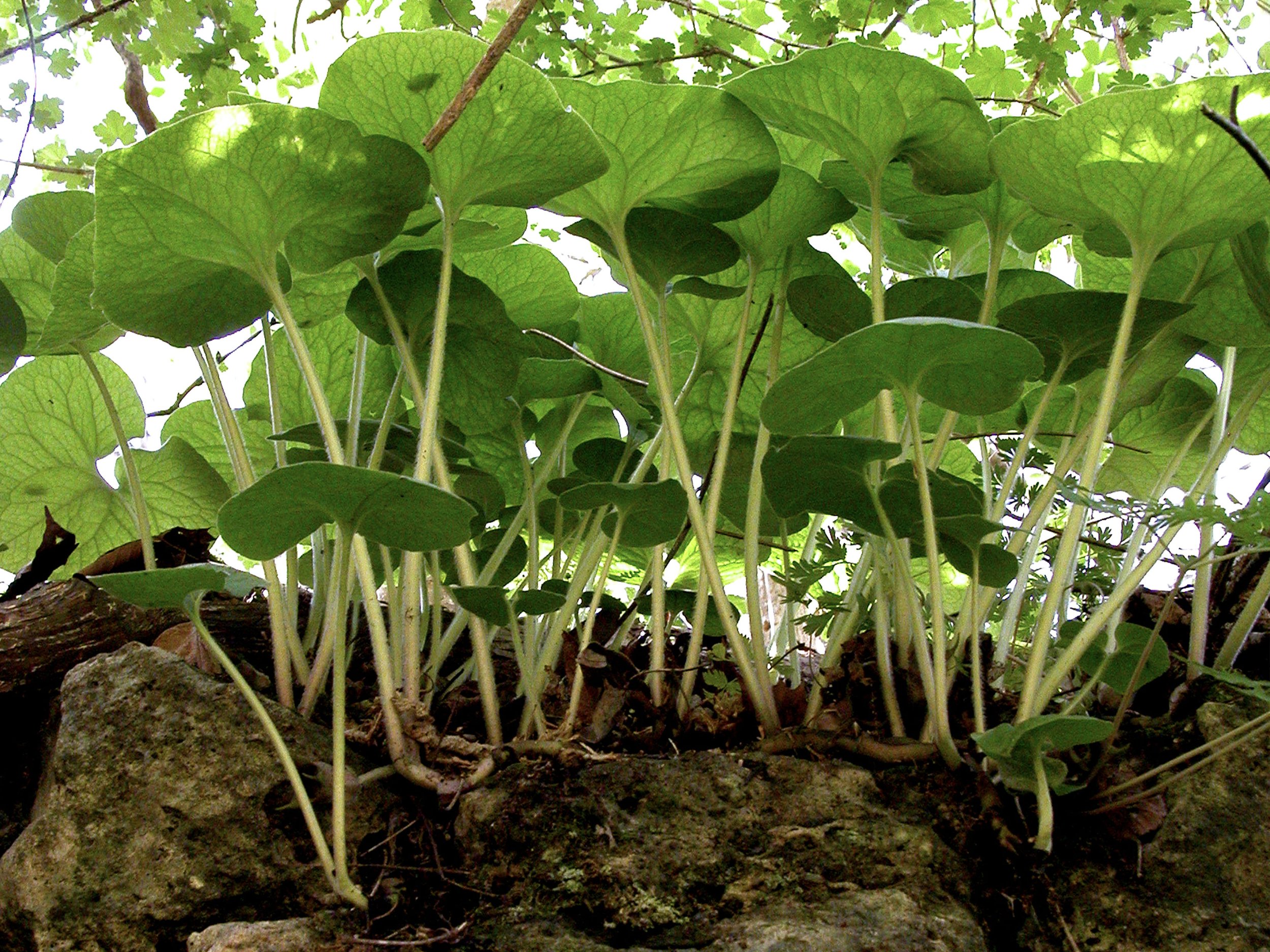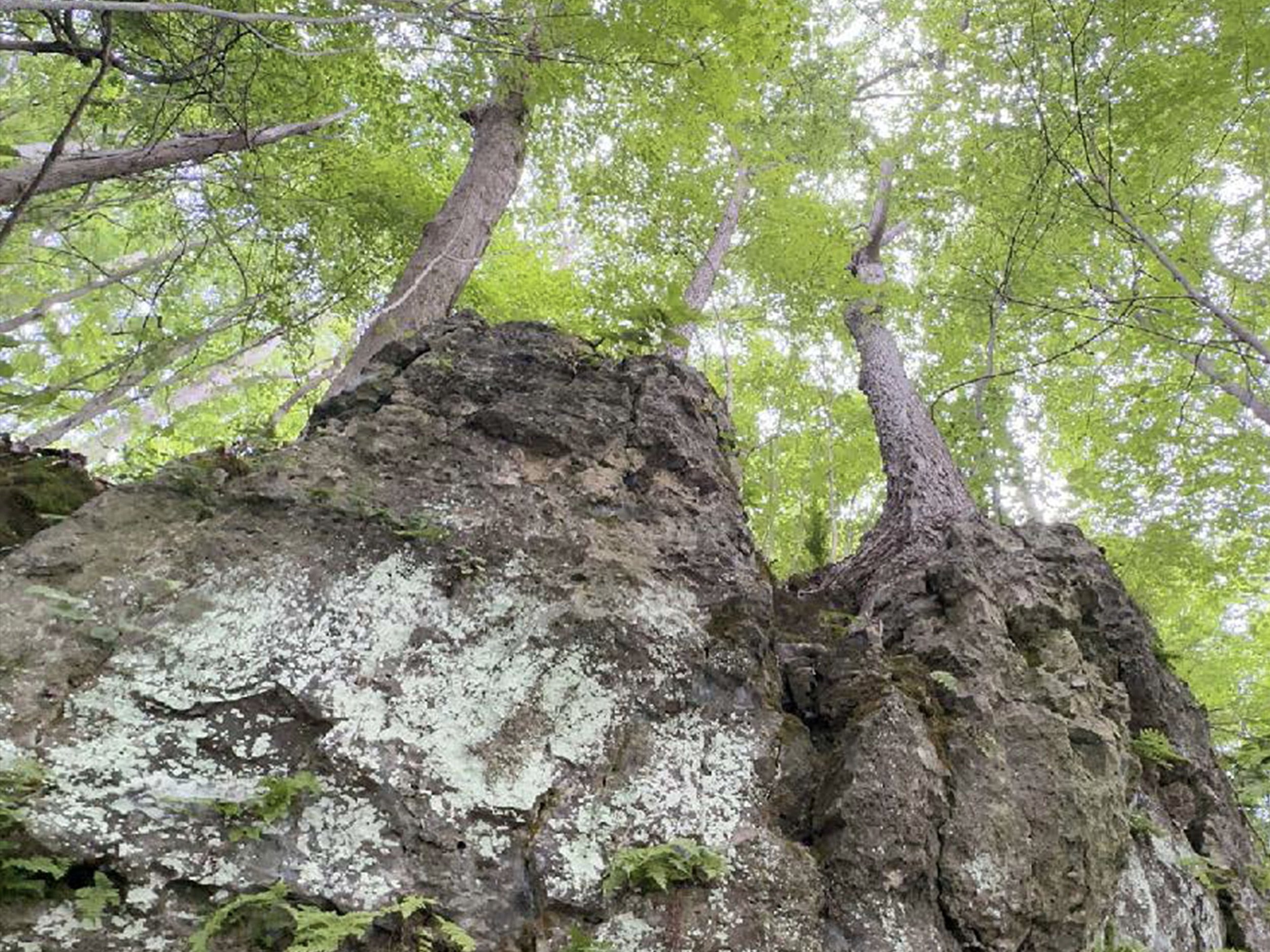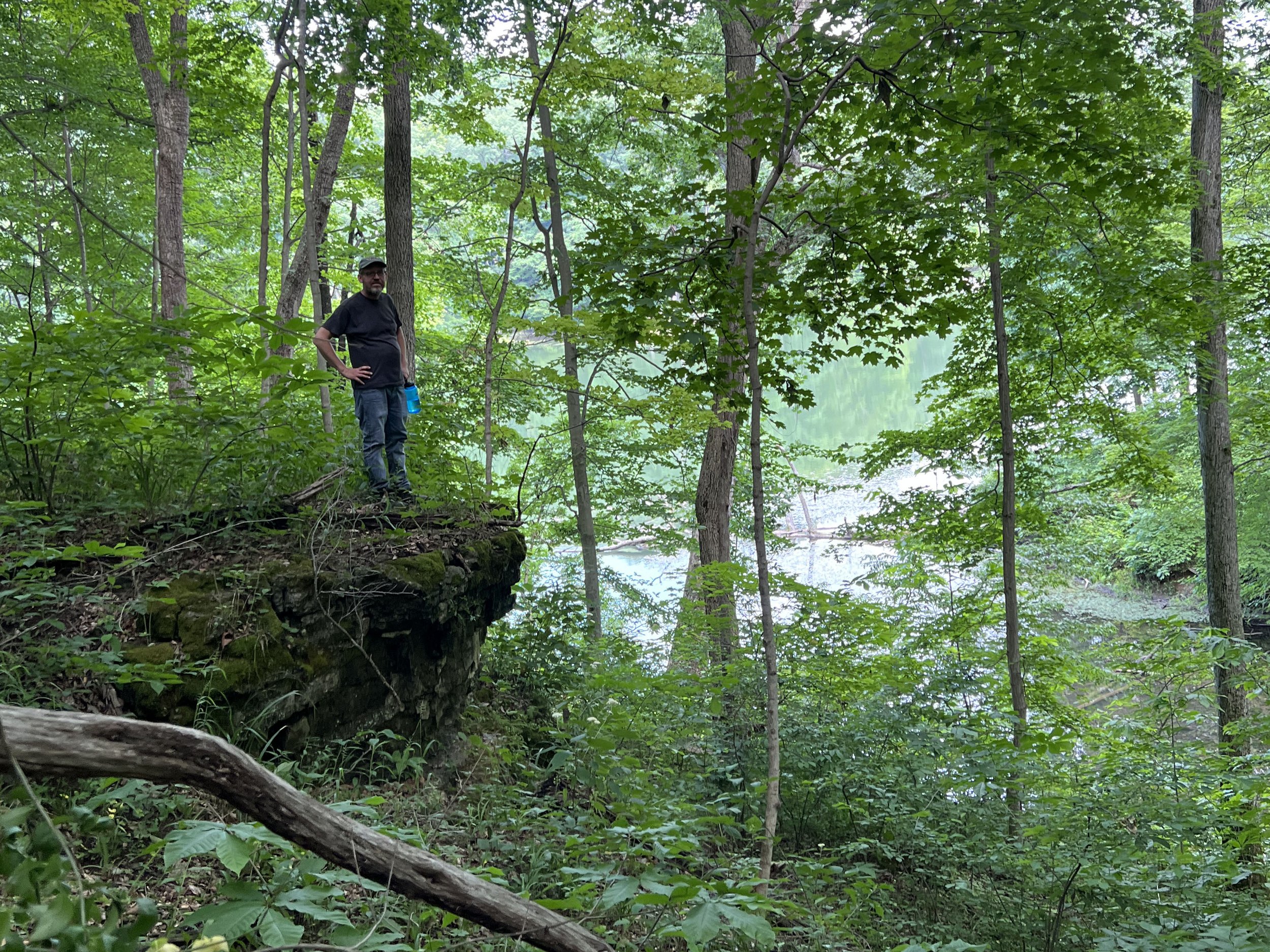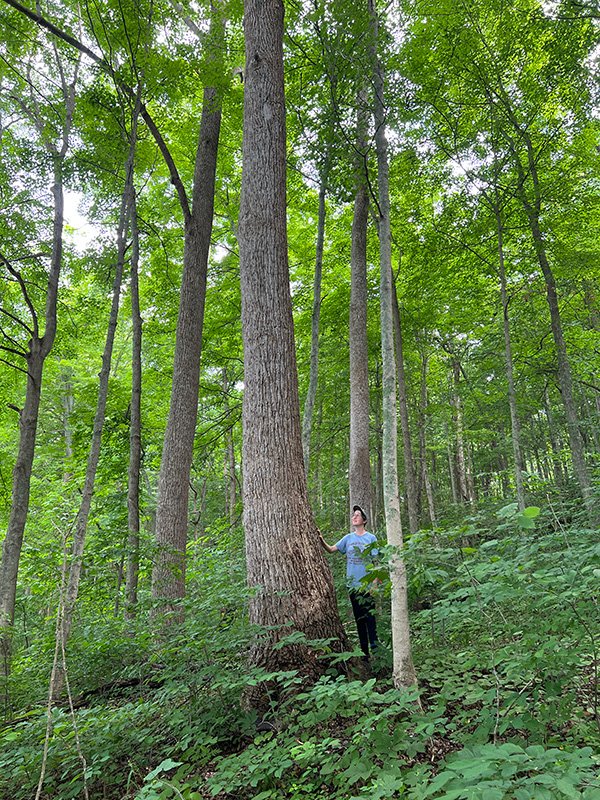Hickory Hollows Expansion
adding 8 acres to the Highlands Nature Sanctuary
Hickory Hollows is a 77-acre addition to the Highlands Nature Sanctuary in Highland County that is being expanded with an adjacent eight-acre forest acquisition. Hickory Hollows is only a stone’s throw away from the Sanctuary’s Otter Banks tract that lies in the central section of the 3,000-acre preserve. (Scroll down to see map below the photo gallery.)
The shoreline of a large, quiet, privately-owned lake borders the entire eastern boundary of the property, contributing to the unusual beauty of the preserve. Experience the extraordinary pleasure of walking beneath towering oaks and hickories on the property’s steep hillsides while seeing, far below, the lake sparkling in the sunlight between the boles of trees.
At its core, Hickory Hollows shelters the largest, oldest hickory forest in the Sanctuary region, offering a glimpse of the hickory forests that once dominated the primeval woodlands in the western half of the Sanctuary. Towering boles of pignuts, shagbarks, and bitternuts abound on this tract of forest, alongside small numbers of white and red oaks. Roughly 55 acres of the property are pristine enough that one can walk beneath the canopy without the usual proliferation of bush honeysuckle that has tragically destroyed nearly all of western Ohio’s understory communities.
A plan for a public hiking trail at Hickory Hollows is in process. For more details on this project, scroll below the photo gallery
Total Project Cost: $651,747
Current balance yet to raise: $o
THIS CAMPAIGN IS COMPLETE!






Saving a remnant hickory-rich forest. Including the 8-acre acquisition, Hickory Hollows is an 85-acre block of forest that is composed of nine small parcels - all of which lay in a contiguous block of land on the lower slopes of Spargur Hill, adjacent to a private lake. The property stretches between two roads: Spargur Lane to its northern boundary and Cynthiana Road to its south. The dominant tree species here are large and healthy pignut, shagbark, and bitternut hickories. For years here at the Arc, we have longed to save a remnant of the hickory-rich forests that once thrived in the western half of the Sanctuary. It is likely that in the past these forests included more oaks, a result of multiple rounds of select harvesting of them. That said, it is also likely that even the primeval forests of this region were heavily dominated by hickories.
Protecting an unusually dense karst-country wildflower display. Hickory Hollows supports an unusual abundance of wildflowers on its east-facing slopes and in its sheltered ravines. Species include: showy orchis (Galearis spectabilis), twinleaf (Jeffersonia diphylla), wild geranium (Geranium maculatum), eastern green violet (Hybanthus concolor), red columbine (Aquilegia canadensis), Jack-in-the-pulpit (Arisaema triphyllum), large white trillium (Trillium grandiflorum), Canadian wild ginger (Asarum canadense), Jacob’s ladder (Polemonium reptans), Canada violet (Viola canadensis), blue phlox (Phlox divaricata), drooping trillium (Trillium flexipes), harbinger of spring (Erigenia bulbosa), sharp-lobed hepatica (Hepatica acutiloba), wild comfrey (Andersonglossum virginianum), purple cress (Caradmine douglassii), yellow corydalis (Corydalis flavula), large-leaf waterleaf (Hydrophyllum macrophyllum), Virginia bluebells (Mertensia virginica), and mayapple (Podophyllum peltatum).
Fingers of dolomite walls brace the hillsides of the property, providing shelter for ferns, mosses, and wildflowers. Streams meander from Spargur Hill to their confluence with the lake, contributing to the high humidity of this sheltered micro-climate. After a heavy rain, streams are punctuated by small riffles and cascades.
Visitor Services Development. The Arc plans to install a public hiking trail at Hickory Hollows that will originate from a trailhead on the south side of Spargur Lane. The total length of the loop trail at Hickory Hollows will be 1.1 miles.


